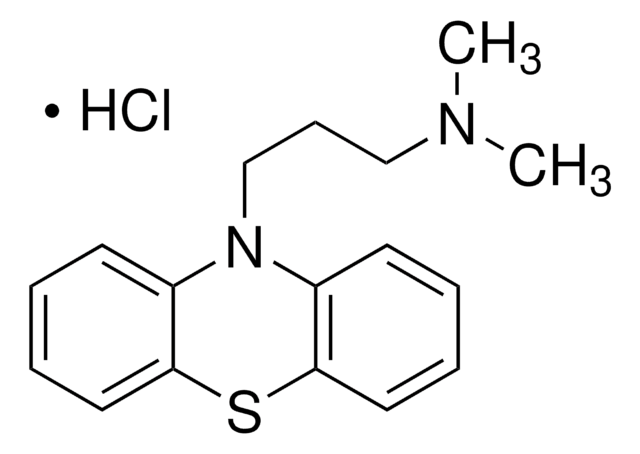07682
6-[Bis(2,2,2-trifluoroethyl)amino]-4-(trifluoromethyl)-2(1H)-quinolinone
analytical standard
Synonym(s):
LGD-2226
Sign Into View Organizational & Contract Pricing
All Photos(2)
About This Item
Empirical Formula (Hill Notation):
C14H9F9N2O
CAS Number:
Molecular Weight:
392.22
Beilstein:
10716241
MDL number:
UNSPSC Code:
41116107
PubChem Substance ID:
NACRES:
NA.24
Recommended Products
grade
analytical standard
Quality Level
Assay
≥98.0% (HPLC)
shelf life
limited shelf life, expiry date on the label
mp
187-190 °C
application(s)
forensics and toxicology
pharmaceutical (small molecule)
format
neat
SMILES string
FC(F)(F)CN(CC(F)(F)F)c1ccc2NC(=O)C=C(c2c1)C(F)(F)F
InChI
1S/C14H9F9N2O/c15-12(16,17)5-25(6-13(18,19)20)7-1-2-10-8(3-7)9(14(21,22)23)4-11(26)24-10/h1-4H,5-6H2,(H,24,26)
InChI key
ULBPQWIGZUGPHU-UHFFFAOYSA-N
Packaging
Bottomless glass bottle. Contents are inside inserted fused cone.
Analysis Note
Proton NMR and Fluor NMR structures corresponds
Recommended products
Find a digital Reference Material for this product available on our online platform ChemisTwin® for NMR. You can use this digital equivalent on ChemisTwin® for your sample identity confirmation and compound quantification (with digital external standard). An NMR spectrum of this substance can be viewed and an online comparison against your sample can be performed with a few mouseclicks. Learn more here and start your free trial.
Choose from one of the most recent versions:
Already Own This Product?
Find documentation for the products that you have recently purchased in the Document Library.
Enhanced UHPLC-MS/MS screening of selective androgen receptor modulators following urine hydrolysis.
Anna Gadaj et al.
MethodsX, 7, 100926-100926 (2020-06-18)
Selective androgen receptor modulators (SARMs) represent non-steroidal agents commonly abused in human and animal (i.e. equine, canine) sports, with potential for further misuse as growth promoting agents in livestock-based farming. As a direct response to the real and possible implications
Our team of scientists has experience in all areas of research including Life Science, Material Science, Chemical Synthesis, Chromatography, Analytical and many others.
Contact Technical Service







